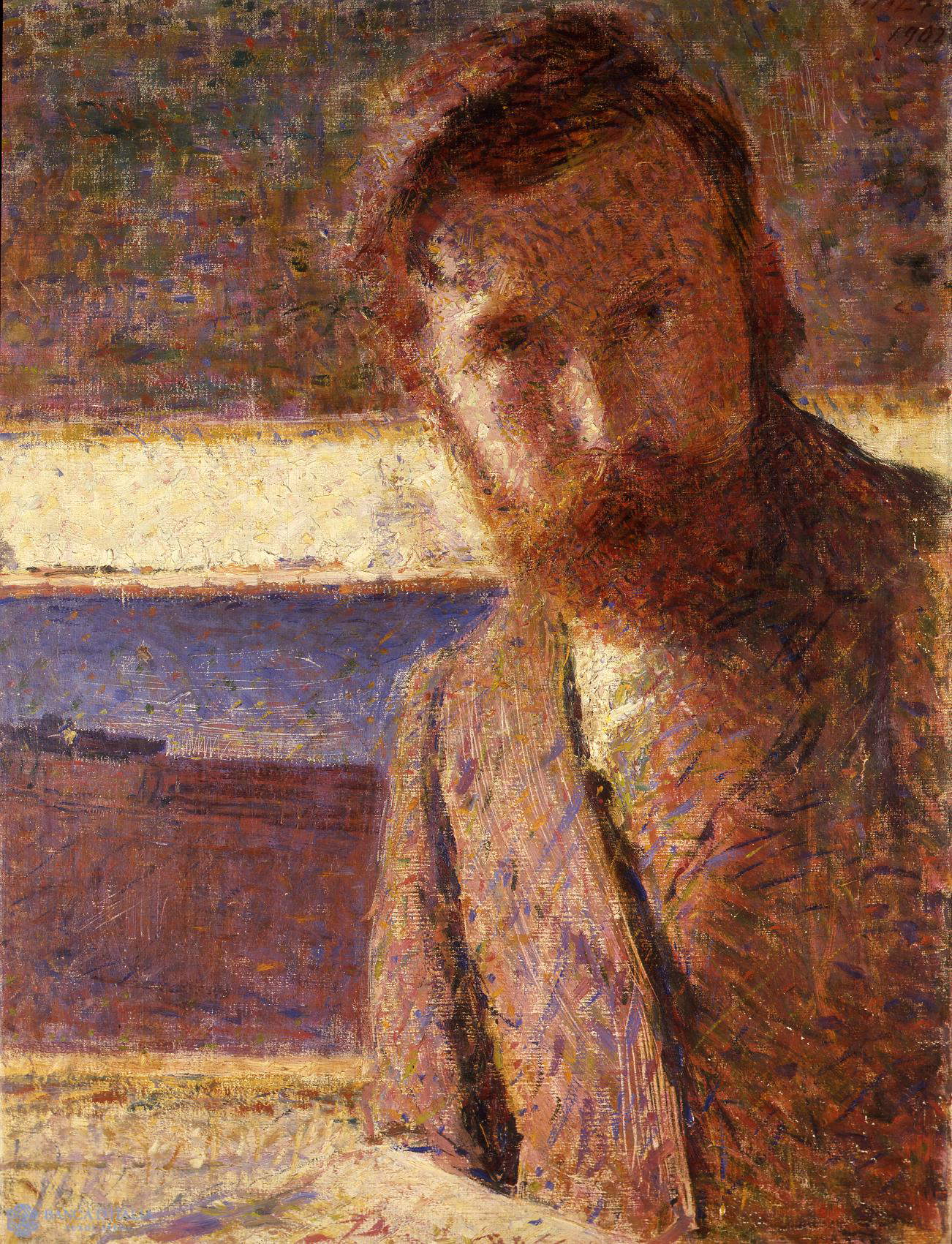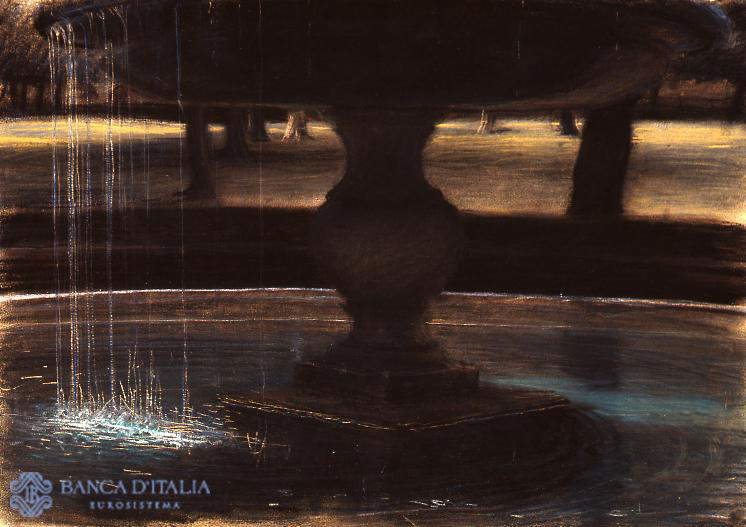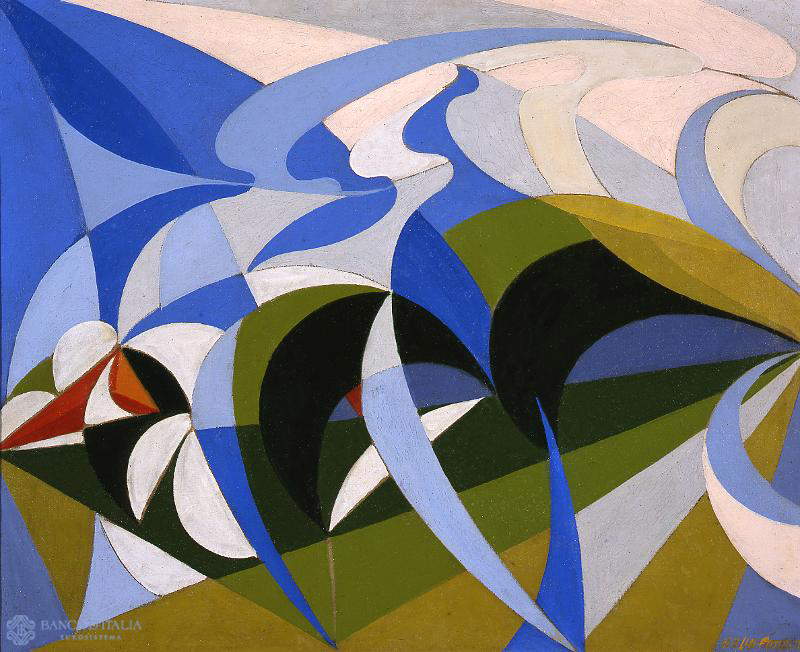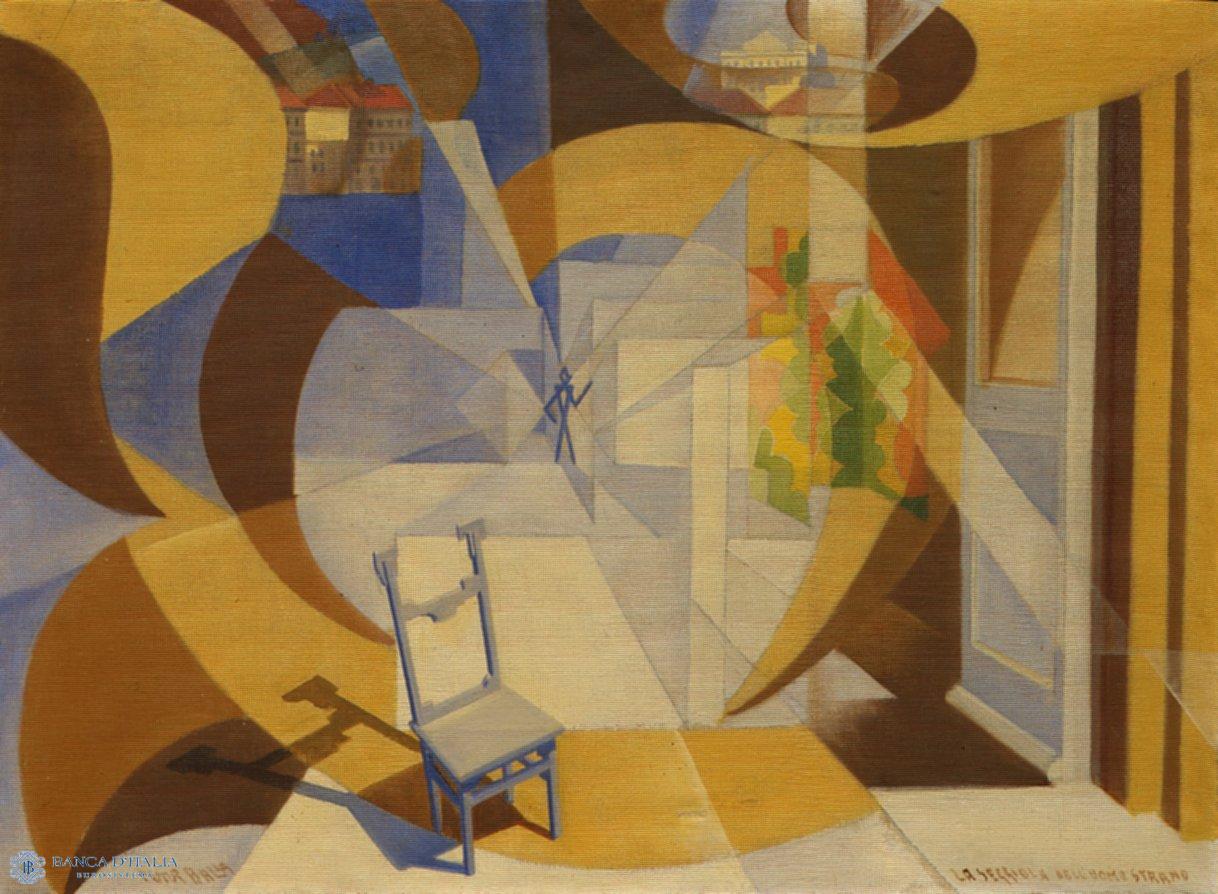From March 15 to April 30, 2022, Banca d’Italia ’s headquarters at Via Cordusio 5 in Milan will return to display its collection of works by Giacomo Balla (Turin, 1871 - Rome, 1958) with the exhibition Giacomo Balla 1902-1940, after having already done so in the fall (the exhibition was, however, suspended due to anti-Covid restrictions). Existing to Give, which commemorates the great Turin artist on the 150th anniversary of his birth. There are nine works on display.
The exhibition opens with the 1902Self-Portrait, which seems to flesh out the words the artist would write about himself, in a 1915 self-portrait in words: “Giacomo Balla / Born Turin / Green violet-faceted / Man-intuitive transcendental / Futurist painter-dynamism / Abstraction-state of mind / Plastic equivalents-compenetrations / And more to come. / Life whirlwind storm / Tides victories training / Struggle x struggle beats records / Indifference against adversity / amusements O enjoyments millions / boredom OXO-satisfactions / exist to give / defects-semicircular / Dance.” The work is intended to present certain aspects of the artist, summarized by him in one of his writings, “I began from the first years of my life to think: I want to make a painting. No one had explained to me what it took to paint. I had no idea whatsoever for the execution of a work and I wanted to make a painting, now it must be explained that never person gave me strength and help to reach my ideal, since the death of my father I have always endured all the privations that social life can give, and little by little I have distanced myself from the world and I am getting closer and closer to nature.”
In 1904, for Balla, after his wedding in Campidoglio to Elisa Marcucci and the birth of his first-born daughter Lucia (in the Futurist period her name would become Luce), a happy moment began, coinciding with his move to the house-convent at Via Parioli 6 in Rome (today Via Paisiello), overlooking Villa Borghese. Balla writes in one of his notebooks, “I am nourished by the very good purity of nature for which son of it I do not accept any affirmation. I have a character neither so nor so, I am nature made by it and not by men, so I will live by me most certain of my art that makes my soul evident in painting.” In the early 1910s Balla displayed his views of Villa Borghese in several exhibitions. Balla’s art always starts from the analysis of reality: the nature of Villa Borghese like the legs of a dog on a leash or those of his little girl Luce running on the balcony, the cars running in Via Nazionale in Rome, the sails of some boats moved by the wind. On October 30, 1914, his second daughter Elica was born in Rome: in her name the painter fixed the dynamic idea of speed and the warlike idea of flight.






After the luminous technique of the Villa Borghese works, he moved on to the years of open struggle with his Futurist pursuits exemplified in the exhibition by the Sunday Rifle Shot, which also resumes his focus on portraiture and interest in furniture understood as leaving the narrow dimensions of the painting and entering the environment of life. While the Portrait of Luigi Boncompagni Ludovisi testifies, through the photographic cut, to a strong psychological introspection, the philosophy of the 1915 “Futurist Reconstruction of the Universe” finds a new image in four tapestries sent to Paris in 1925 where he received a gold medal. On the wall of the V Exposition internationale des arts décoratifs, Mare, vele, vento - Mare velivolato- stands out by far. As always, in Balla’s art each large masterpiece is studied in several pencil studies until the final realization that approaches the finished work.
Decorating a space for life will become the fixed idea of the craftsman painter: before reconstructing the universe, Balla begins to cheer his little cocoon. His house becomes the nucleus where the Balla family makes futurist furniture works in order to sell them: wandering around this particular workshop, one can meet the painter who “like a good worker would set to work to reconstruct lamps, lampshades, screens, toys and sell them the next day for a few liras,” as his daughter Elica recalls. Balla’s house is presented as a forge where he invented, designed and made objects that were useful for work but also beautiful and magical, as visible in the painting La seggiola dell’uomo strano (The Strange Man’s Chair), where the nano-magician Giacomo Balla towers in the center. In 1937, the newspaper Perseus published the article Futurists and Futurists where Balla explains, “Pure art is in absolute realism, without which one falls into ornamental decorative forms, so I have resumed my earlier art: interpretation of bare and wholesome reality which through the spontaneous sensibility of the artist is always infinitely new and convincing.” Balla returns to the divinized reality of light: twenty years later, the road of the real, resoundingly abandoned in 1910, returns to present itself to the painter who was able to throw painting to the nettles. Finally, this “painter of light” is expressed in his luminous Dahlias, placed on a table wrapped in colored veils, painted in the living room on Via Oslavia where that very same table can still be admired today. Balla’s search is, yes, cheerful and joyful but also, in its own way, bitter: he searches but perhaps does not know what, because the important thing is not what is to be found but the important thing is that one is searching; in fact, we read in another of his poetic notes that for a true seeker the equation can also be “Nothing = Everything.”
The exhibition, which is free of charge, is open Tuesday through Friday from 3:30 p.m. to 5:30 p.m., and on Saturdays from 10 a.m. to 1 p.m. To enter, reservations are required, which can be made from the exhibition website.
 |
| Milan, the collection of works by Giacomo Balla on display at the Bank of Italy |
Warning: the translation into English of the original Italian article was created using automatic tools. We undertake to review all articles, but we do not guarantee the total absence of inaccuracies in the translation due to the program. You can find the original by clicking on the ITA button. If you find any mistake,please contact us.